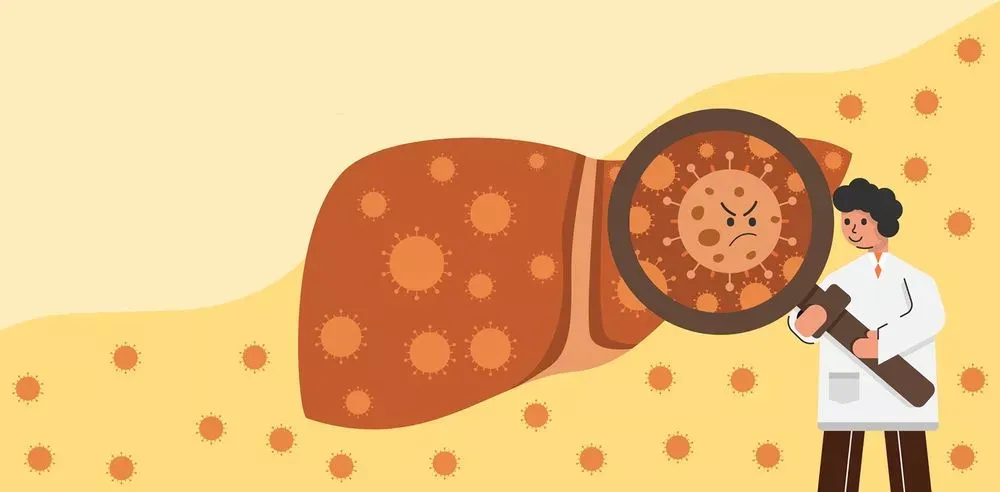World Hepatitis Day, or Viral Hepatitis Day, celebrated on July 28, is an opportunity to intensify the international fight against hepatitis, to encourage the performance and participation of people, partners, and the general public, and emphasize the need for a greater global response.
The day chosen for the celebration was a tribute to the birth date of Dr. Baruch Blumberg (1925-2011), an American microbiologist who received the 1976 Nobel Prize in Physiology or Medicine, for having contributed to the identification of the hepatitis B virus and subsequent discovery of the disease vaccine.
Currently, the low coverage of tests and diagnostic treatment is the most important problem to be solved to reach the global phase-out targets by 2030. Check the data:
- 325 million people suffer from viral hepatitis B and C;
- 2,850,000 people were infected in 2017;
- 80% of people with hepatitis lack prevention, testing, and treatment;
- $ 6 billion a year is the amount that would have to be invested to achieve the global phasing-out targets by 2030.
The population must pay attention to the necessary precautions not to contract viral hepatitis, and also to know what types exist, symptoms, and treatment. Here on the blog, we have already published an article with all this information, because as many know, July was named "Yellow July in Brazil: month of prevention and awareness of viral hepatitis".

Viral hepatitis B and C affect 325 million people worldwide and cause 1.4 million deaths each year. They are the second most deadly infectious disease after tuberculosis, and there are 9 times more people infected with hepatitis B and C viruses (HBV and HCV) than with HIV.
Viral hepatitis can be prevented, treated, and, in the case of hepatitis C, cured. However, more than 80% of people with hepatitis lack prevention, detection, and treatment services.
During the World Hepatitis Day 2019 campaign, WHO asked all countries and partners to promote the theme "Invest in the elimination of hepatitis". WHO will publish new estimates of the additional investments needed to achieve the globally agreed viral hepatitis elimination targets for 2030, in the context of universal health coverage.
Hepatitis: what it is, causes, symptoms, and treatment
Hepatitis is an inflammation in the liver that can be acute or chronic. Its cause can be infectious, being linked to viruses, bacteria, etc., immune (when caused by autoantibodies), or toxic (when caused by the use of some medicines, alcohol, drugs, and toxic substances in general). It is also considered, depending on its etiology, a sexually transmitted disease.
In the case of viral hepatitis, they may progress to chronic diseases that can cause more serious damage, even causing cirrhosis or cancer.
Some people with hepatitis may have no symptoms, however, others may have:
- Loss of appetite
- Nausea and vomiting
- Diarrhea
- Dark urine and pale stools
- Abdominal pain
- Jaundice (yellow skin and/or eyes)
In some cases, hepatitis disappears on its own, otherwise, it can be treated with the use of medications. Sometimes hepatitis can last a lifetime, so vaccines are extremely important, as they help prevent some viral forms.
Viral hepatitis is classified into A, B, C, D, E, F, and G. Hepatitis F is a DNA-virus, transmitted to rhesus monkeys in the laboratory experimentally, through feces extracts from infected monkeys. There are still no case reports in humans.
Hepatitis G was the most recently discovered hepatitis, in 1995, and is caused by the VHG virus, which is estimated to be responsible for 0.3% of all viral hepatitis. All possible forms of contagion are still unknown, but it is known that the disease is transmitted mainly by blood contact.

Know a little more about the most common hepatitis:
Hepatitis A
Also known as "infectious hepatitis", hepatitis A is a contagious disease caused by the transmission of the HAV virus. Its transmission is fecal-oral and can occur through contact between individuals, contaminated food or water, being strongly linked to basic sanitation and hygiene conditions.
Hepatitis A is curable, and since 2014 its vaccine has been included in the SUS vaccination schedule for children. The vaccine is recommended for children, adolescents, and non-immune adults, and should be applied after 12 months of age with a booster after 6 months.
Hepatitis B
Hepatitis B also called homologous serum, is an infectious disease caused by the HBV virus, transmitted mainly through body fluids such as blood, semen, and breast milk.
It can be transmitted from mother to child during pregnancy or breastfeeding, through sexual intercourse without using condoms, transfusion of contaminated blood, or sharing of personal objects, such as nail pliers, razor blades, toothbrushes, non-sterile syringes, and needles, among others, as well as in the use of non-disposable materials in tattoo and body piercing studios.
Vaccination against hepatitis B is indicated for people of all age groups, and should preferably be applied within the first 24 hours after birth, thus preventing chronic hepatitis.
Hepatitis C
Hepatitis C, also called "Hepatitis no A no B" (NANB), is caused by the HCV virus and is transmitted mainly by contaminated blood. Like hepatitis B, hepatitis C can also be transmitted from mother to child during pregnancy and childbirth, during sexual contact, and through objects and materials mentioned above.
Unfortunately, there is still no vaccine against this disease, however, hepatitis C is one of the few chronic diseases that can be cured.
Hepatitis D
Hepatitis D, also called Delta, is caused by the HDV virus and has characteristics similar to hepatitis B and C in terms of the means of transmission. However, this virus depends on the B virus to be able to infect a person, so even though there is still no vaccine against hepatitis D, the vaccine against hepatitis B protects against the Delta virus.
Hepatitis E
Hepatitis E is caused by the HEV virus, and like hepatitis A, it is strongly linked to the lack of basic sanitation and personal hygiene. In Brazil, the disease is considered rare, with a higher rate in Africa and Asia. There is still no vaccine against hepatitis E, so the best way to prevent it is to maintain good hygiene and avoid the consumption of food of doubtful origin.
To learn more about subjects related to health and medicine, keep following our blog.
If you are an administrator, secretary, or health professional in a clinic or office, be sure to learn more about Ninsaúde Apolo, a complete system for medical management. Visit our website and request a demo.

